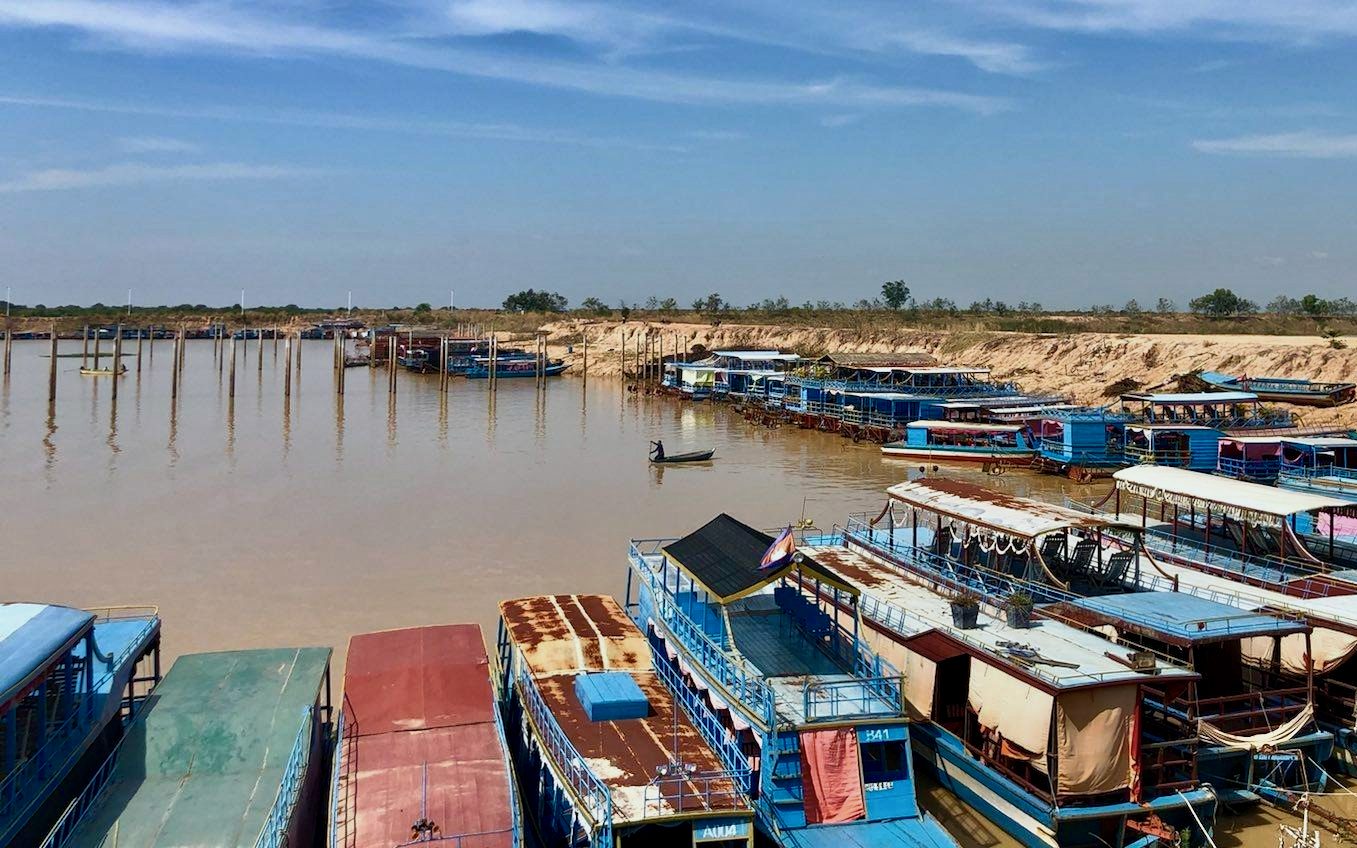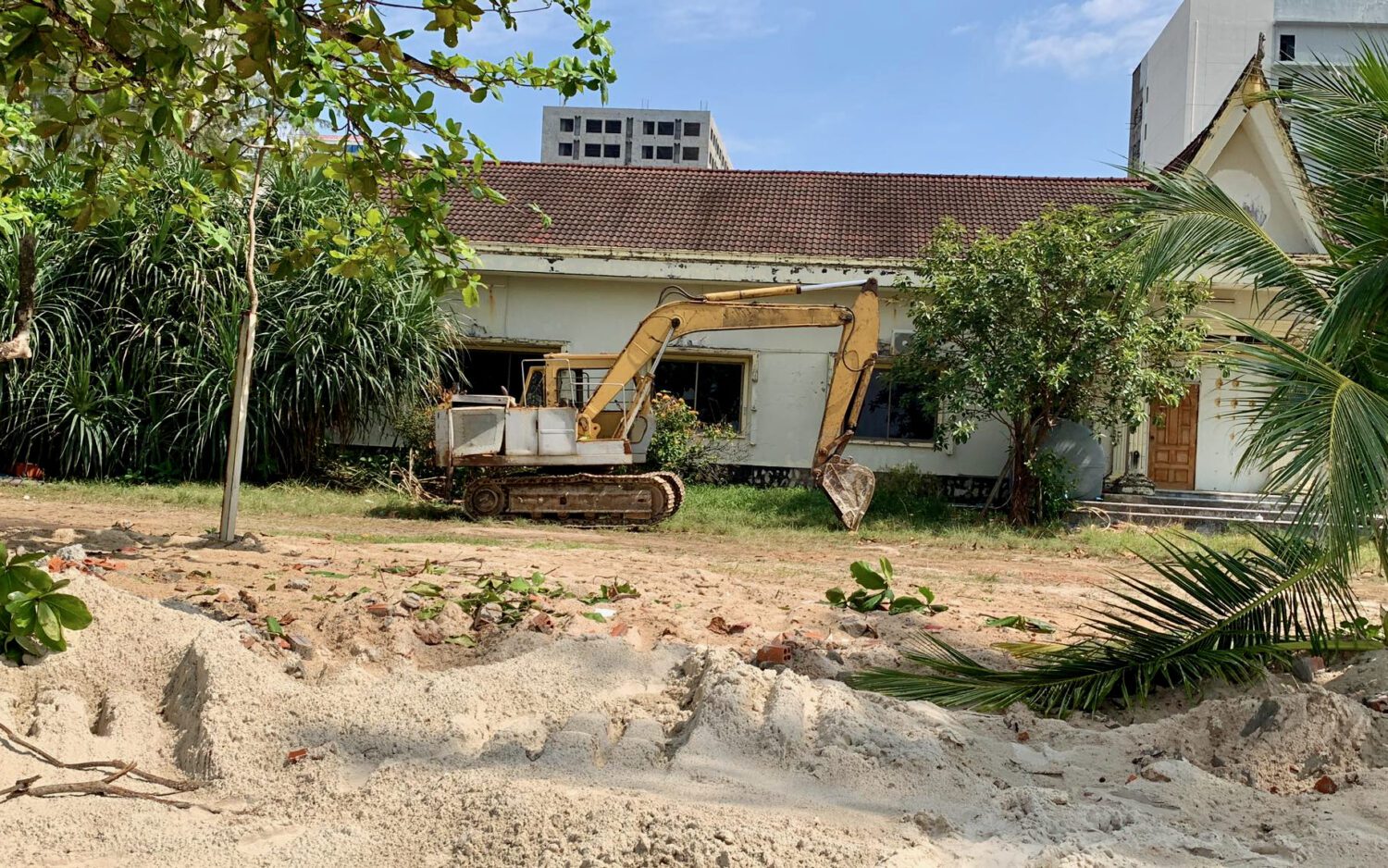KAMPONG PHLUK, Siem Reap — Families living on the banks of the Tonle Sap lake here say they are concerned about the currents feeding into the lake, which has been slow to rise again as the fish spawning season arrives. For the third year in a row, water levels remain below average, and villagers worry that the fish they depend on for their livelihoods will continue to disappear.
Governmental officials, however, are more hopeful, saying this year could break the recent run of low water and dwindling fish, pointing to more rain expected across the region.
The Tonle Sap lake, which is bordered by five provinces, grows substantially every year during the rainy season, when its waters reverse course and the Mekong river flows in. The governmental Tonle Sap Authority says 62 percent of the lake’s increased rainy season water volume comes from the Mekong, and 38 percent from 11 other surrounding rivers.
The Tonle Sap’s surrounding forested wetlands that flood with the rising lake are known for a rich biodiversity of fish, other animals and plants.
Panh Kimhang, 45, says it’s already June but the lake has yet to rise to the bottom of her house.
“These months, there is no water. When there is no water, we are afraid of losing our lives. There is nothing to find — nothing to find, nothing to eat, nothing to feed our children,” Kimhang says. The usually-common giant snakehead fish has been hard to find, she says.
Another woman, Lam Samthea, also says the water level is rising more slowly than usual.
“I don’t know why the water does not rise. If we get deep water, we can easily find fish. In shallow water it is difficult to have fish. We go fishing [but we] can’t find any,” she says.
Her whole family depends on the water, with two sons working on boats as tour guides, she says.
A fisherman, Chea Sambath, says these months are crucial for the fishing families’ fates for the rest of the year. Fish lay eggs in flooded areas, and without the water rising, there will be no fish, he says.
The cause and severity of the low waters are contested. Several researchers have pointed to the damming of the Mekong river upstream — especially in China — as restricting water flows. The Cambodian government, with close ties to China, has previously pointed instead to climate change. Officials said this month that the situation this year is not as bad as previous years.
Dul Buntha, a representative of a local fishermen’s association, says the amount of rainfall, water levels in upstream rivers, and the lake’s depth seem less than in the past.
The Mekong River Commission, an intergovernmental body, recorded the Tonle Sap at Prek Kdam at 2.34 meters as of Monday. That is higher than 2019 and 2020, which saw depths of 1.28 and 1.38 meters, respectively, for this time of year, but remains below the average of 3.44 meters.

Kampong Phluk commune’s deputy commune chief Chhoun Kuchseak downplays the low water levels, saying that less rainfall simply happens from time to time.
Fish are currently breeding, but they are still carrying their eggs, so as long as water levels rise by the end of July — as he expects they will — this year will be fine, he says.
Mao Hak, deputy president of Tonle Sap Authority, also emphasizes that this year is better than recent years, and expected rain could mean the forests around the Tonle Sap could flood as needed by the lake’s fish.
“The weather is favorable,” Hak says. “Maybe in the middle of July it will reach the level of the flooded forest. Last year during this month, the water in the lake had not risen at all.”
Te Navuth, permanent vice chairman of the Cambodia National Mekong Committee, adds that Mekong river levels had recovered across the region, including in Thailand, Laos, Cambodia and Vietnam.
“The water level of the Mekong river has risen high enough due to heavy rains in the upper Mekong river above Cambodia, causing the Mekong river to start rising and flowing into the Tonle Sap lake. So we will observe this from now on until October,” Navuth says.
Oudom Ham, an independent consultant on climate change, says both global warming and hydropower dam construction on the Mekong are likely contributing to the Tonle Sap’s recent lack of water.
The lake is evaporating more water due to higher temperatures, while new hydropower dams are retaining millions of cubic meters of water in their catchments, he says.
“We see that the dams from the upper [parts] of the [Mekong] river in China — there are 11 to 12, and below this are 12 more dams planned,” he says, “we see that the water is blocked by each dam, only enough to flow to the bottom and pour into the Tonle Sap.”
A forecast issued earlier this year by the Water Resources Ministry’s meteorology department says rainfall in the early part of the rainy season “may be higher than the average for many years,” and also predicts the potential for higher-than-average rainfall from August to September.
But in Kampong Phluk, fears persist despite the forecast.
Kimhang, observing the Tonle Sap lake still failing to reach the bottom of her house, says her income has fallen in recent years, and worries that this year will again be tough.
Her typical daily income during the fishing season has dropped from about $10 to $25 a day to $5 to $7.5, she says.
“The most feared is the fish,” she says. “We’re afraid we will lose the fish.”












